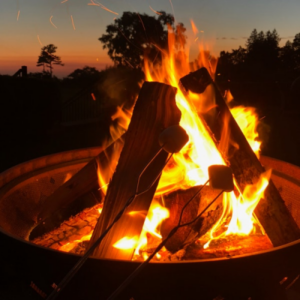Heating Your House with Firewood –
Part 1: Getting Started

Global Wood Use
Most people do not realize that the primary use of wood in the world is not for building materials or paper but rather as an energy source for cooking or heating. This is particularly true in developing nations that are highly populated and have limited availability to other sources of energy. I have seen extreme, wide-spread poverty in my trips to Central America and Asia. The use of wood for cooking and heating was fundamental for living. In the US, we are blessed to have wood as an option for cooking when camping rather than depend on it for daily use. Firewood is available for heating as an alternative to electricity or natural gas. The use of wood for heating in the US is likely to increase in future years as the cost of fuel oil, electricity, and natural gas will continue to increase. Also, I think many Americans are eager to have more of a connection to nature. Wood heating offers us such a connection in our busy lives. However, before you convert to wood heating as a return to the “simple” days, you probably want to invest in a firewood splitter because splitting your own firewood is not “simple.”
How is Firewood Measured?
One of the most misunderstood aspects of firewood is how it is measured for sale. Firewood is sold based on a unit of volume known as a cord. A “standard” cord of wood is a volume of stacked wood, including air space and gaps, occupying 128 cubic feet. A cord is defined as the volume of a stack of wood 4 ft high by 4 ft wide by 8 ft long. There are local variations, so the buyer and seller need to clearly communicate to each other. The actual volume of wood in a 4 x 4 x 8 ft cord can and will vary greatly based on many factors: diameter and straightness of the wood and how the bundle is stacked. Some caution is needed when buying a “truck load” of firewood. This is a vague, non-standardized term and the volume of wood can range from 1/5 cord to over ½ cord depending on the same issues identified above. Clearly, bigger trucks will carry bigger loads than smaller trucks.
What Species Should I Burn?
Most people with their own tree lot are interested in using wood species that provide the best heating properties. So, I have often been asked – what wood species should I burn? My honest answer is – dry wood, with one caveat – Do not burn preservative-treated wood! This is a simple answer, and I will go into more detail. To determine which wood species are better for heating, we need to understand how heat is measured in the US. We use the term Btu (British thermal unit), and one Btu is the amount of energy needed to heat one pound of water one degree Fahrenheit. So, to properly answer the question of what species should I burn, we need to identify species with high Btu’s. And this is largely dependent on moisture content of the wood. Other factors include density, and the efficiency of your wood-burning system. One of the best species to burn is black locust because its weight (lbs) per cord at 20% moisture content is 4,200 and yields 29.3 Btus. Other high-density species such as oak and hickory provide good properties. Low density species such as aspen, basswood, and cottonwood, at 20% MC, provide much lower Btus, ranging from 13.5 to 14.7 Btus.
Meet the Author
Dr. Todd Shupe is the President of Wood Science Consulting, LLC. He is a well-recognized expert on wood forensics, wood preservation, wood decay and degradation, and wood species identification. He has a broad background in new product development, quality management, and marketing and sales in both the public and private sectors. For more information please visit DrToddShupe.com.
We welcome your comments below.
Thank you for visiting. We trust that you have enjoyed reading our articles.
Liked this post? Read more below or search for more topics . . .

